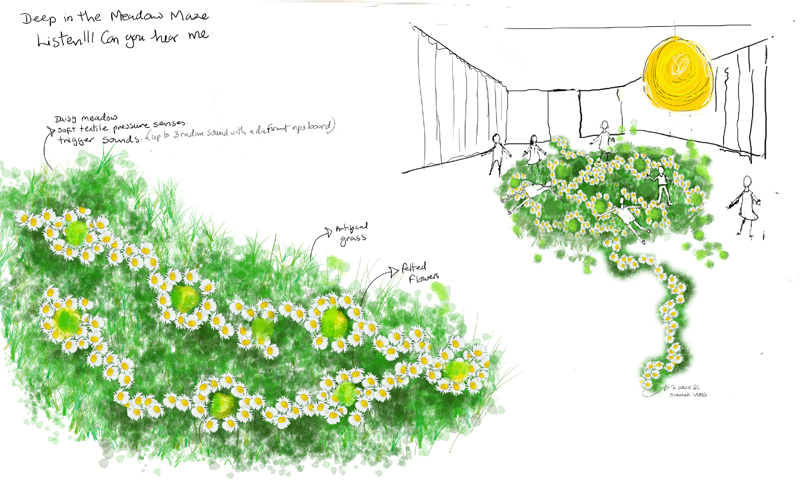This doctoral study explores ways of applying Digital DIY and electronic open source technologies to the design of immersive theatrical environments for children under 3 years old. The overall aim is to make performances more playful and allow audiences greater autonomy through digital interactions. The design draws on research from early years educational practices, developmental and environmental psychology to gain a better understanding of competency of very young children and design more effective environments and objects. In particular, I have attempted to develop early years Schemas or children's play patterns [1,2] as part of a design paradigm to guide my practice-led research.
The first study was designed as a performance installation to promote open-ended play and encourage playful engagement with digital and non-digital objects. Twenty children that took part in the study came with different skills and confidence. We found that most of them spontaneously interacted with the performer and digital objects. During the 45 minute session, many of them engaged in physical, energetic and noisy play. However, few children stayed very close to their grownups, and demonstrated little interested in interacting with the performer or other children, but they actively observed other children and imitated activities they had previously seen. Some children were more deeply absorbed and occupied with one particular object and exercised their preferences by coming back to play with that particular object.

Sketch for the Interactive Sound Meadows..
Drawing from the analysis of the first study, I design and developed a second performance to extend and support the use of digital technology within an immersive narrative theatre format. The devised performance was inspired by a hide and seek adventures and was called The Runaway Hare, it took place at Lakeside Arts Centre in January 2017. My designs (Figure 1) for it took on an agile, arts-based approach drawing on my experience of scenographic practice; I experimented with embedding technologies in the scenography linked with the schema design paradigm to create a multi-sensory interactive environment. Early investigations of the data from The Runaway Hare demonstrate that this format provides more agency to the performer and audience and can help in pacing the story. It also raised questions - how to better motivate and engage very young audiences in digital scenography within the limited time of a performance? How does the combination of the free play and storytelling can allow for a hybrid form of playing in theatres?

The Runaway Hare, Performance Design, Lakeside Arts Centre 2017.
You can see and hear more about the technologies I at used in this video interview by Computerphile .
[1] Athey, C. ( 2007) Extending Thought in Young Children, A Parent - Teacher Partnership, 4th edition, SAGE Publications Ltd, London
[2] Harper, S. "Schemas in Areas of Play" (2004) in the Playcentre Journal Issue 121: Spring.
Patel, R. (2016) The use of Digital Technologies In Theatre for Young Audiences, ON THE EDGE Symposium, Birmingham, July 2016
Patel, R. (2016) IDC2016, ACM SGICHI Interaction Design and Children IDC 2016, Doctoral Consortium, 21-24th June 2016 Media City, Manchester.
This author is supported by the Horizon Centre for Doctoral Training at the University of Nottingham (RCUK Grant No. EP/G037574/1) and by the RCUK’s Horizon Digital Economy Research Institute (RCUK Grant No. EP/G065802/1).